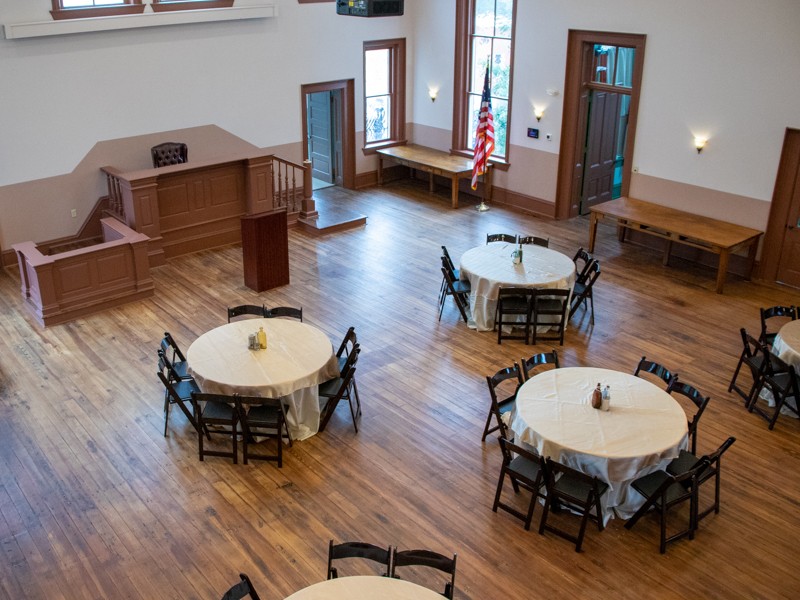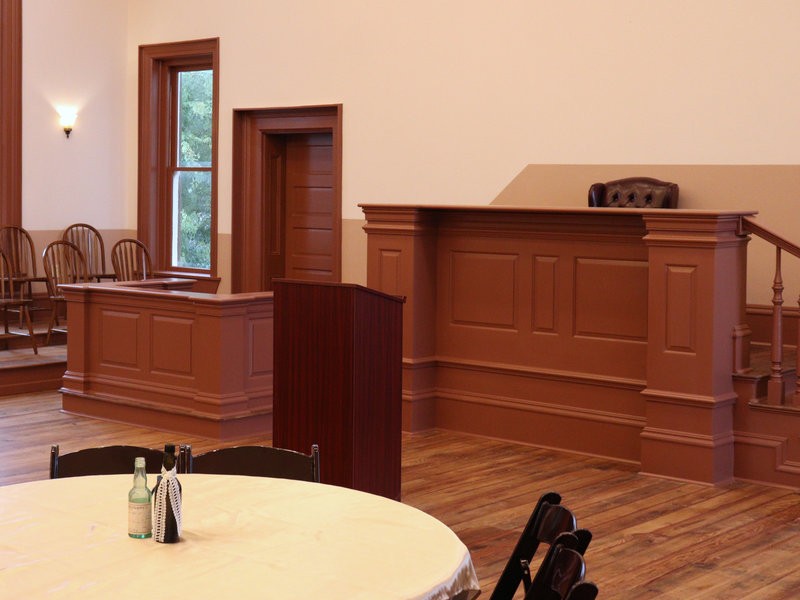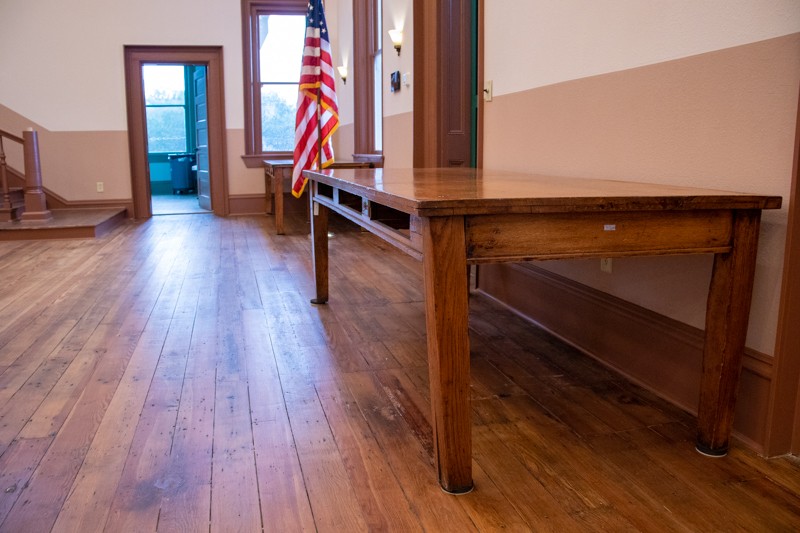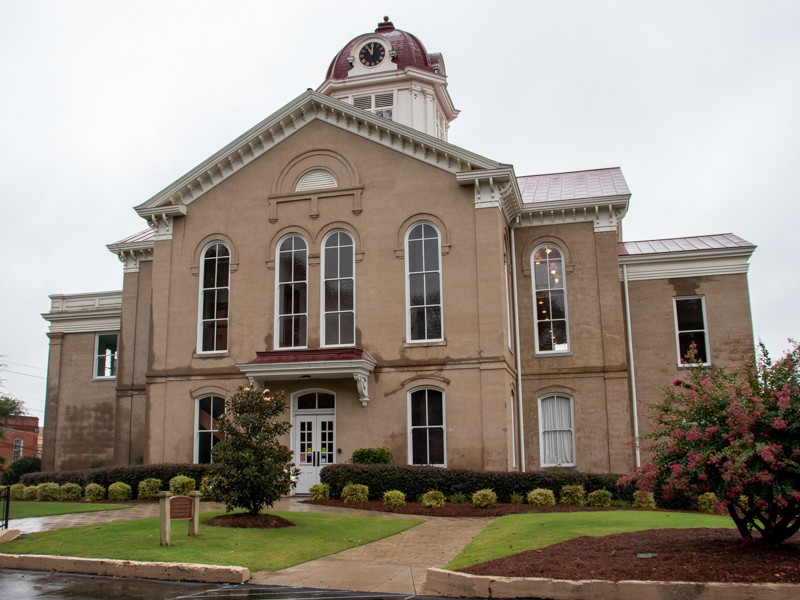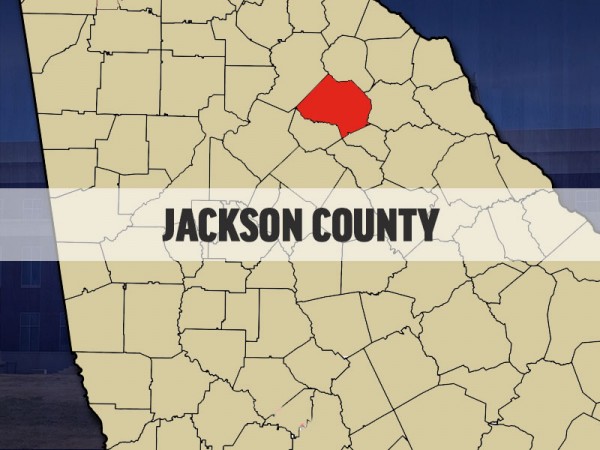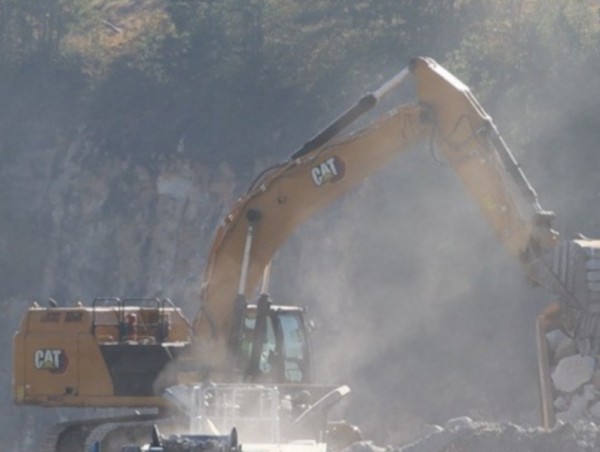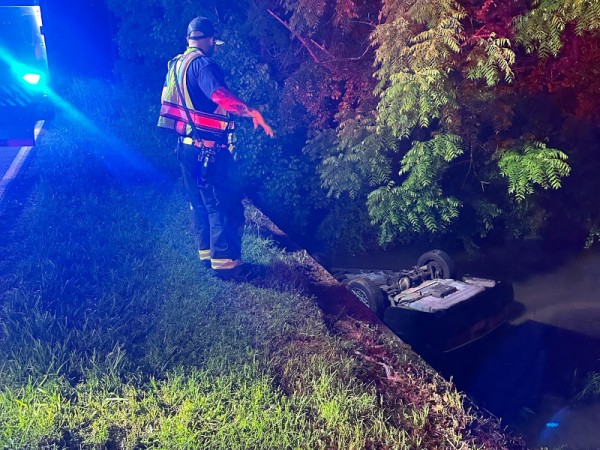The Jackson County Historic Courthouse opened its newly restored second-floor courtroom on Monday, marking the end of a restoration project that began in 2007.
The restoration of the second-floor courtroom features a few modern touches, like a projector screen behind the judge’s bench and a new catering space. Much of the original second floor still remains from its construction in 1879, including the wood flooring and the two original counsel tables.
Sloane Meyer, manager of the Historic Courthouse and Welcome Center, says one of the goals of the courtroom restoration was to give more functionality to the community while also preserving the history of the space.
“We don’t want it to just look pretty. Yes, it looks beautiful, but we want to give people a reason to come in,” Meyer said.
Meyer said the second-floor courtroom will act as an event space and can be rented out for weddings, receptions, meetings and more. Meyer said she is also planning to host in house events, such as movie nights.
The new functionality of the courtroom does not cover up the history of the building, however. For example, a jail cell sits in the hallway just behind the courtroom balcony. According to Meyer, this wood-barred cell used to hold prisoners as they were put on trial.
According to Charlotte Mealor, Archives Coordinator at the Jackson County Historic Courthouse, the Historic Courthouse was restored to the 1908 version of the building. This was done for a few structural reasons, like the addition of the clocktower to the building in 1908.
The restoration plan involved three phases. Phase one focused on restoring the exterior of the building and the clocktower to its 1908 version, while phases two and three aimed to restore the downstairs and upstairs portions of the building.
The first floor of the building reopened when phases one and two finished in 2014. Since then, the first floor has acted as the home of the Jackson County Welcome Center and holds a collection of historic archives.
The tile flooring of the first floor is original and it has a history of its own. According to Meyer, in the mid-1900s, the cable which held the clocktower’s weight snapped, resulting in the weight smashing into the first floor. The portion of the tile flooring which was repaired following this incident is still visible to this day.


